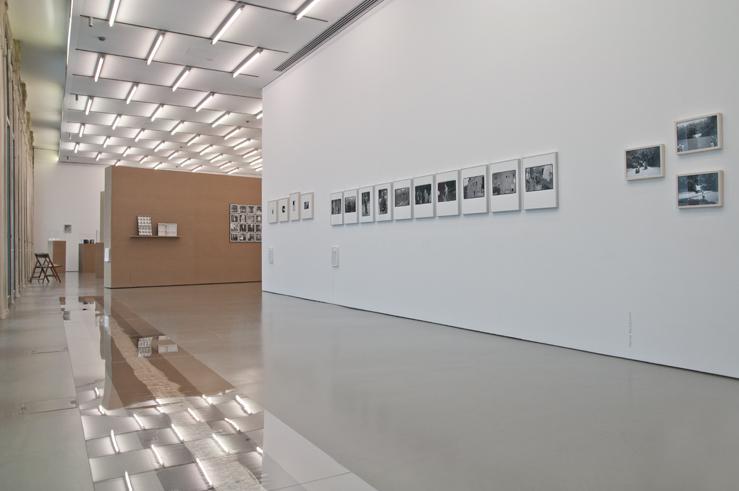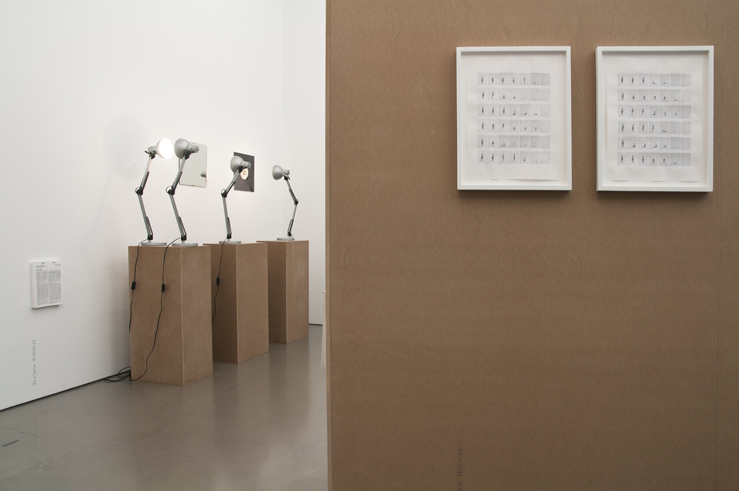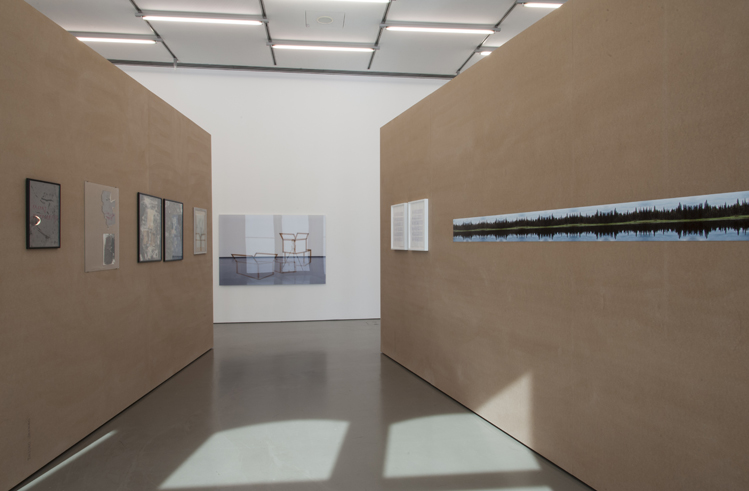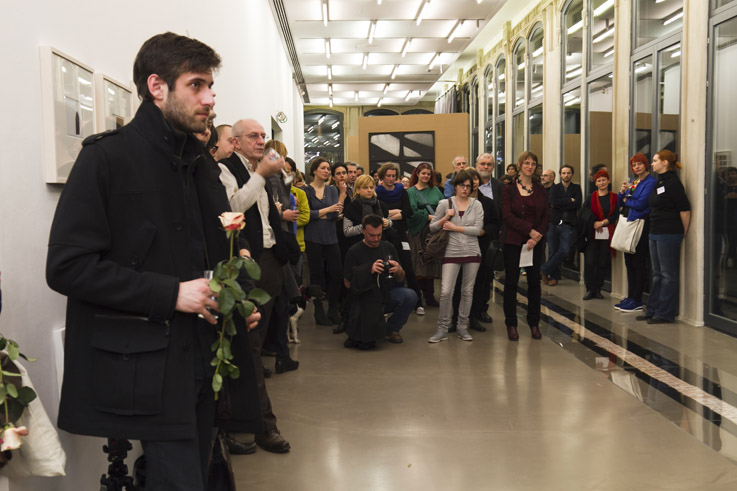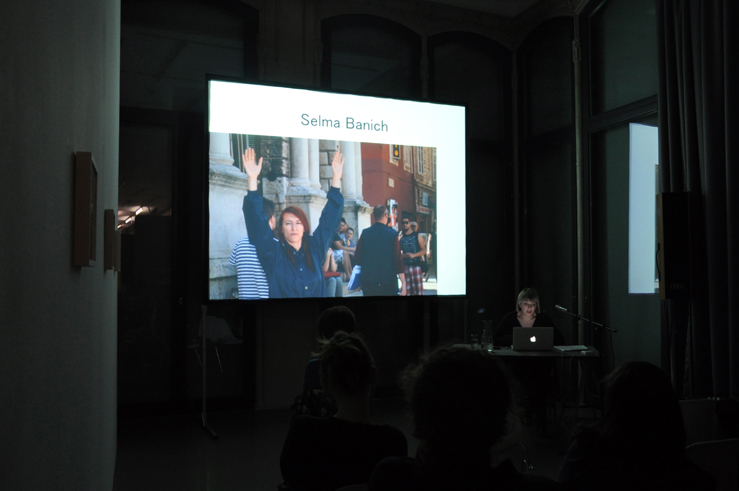Zero Point of Meaning
Non-functional, Non-representational, Elementary, Experimental and Conceptual Photography in Croatia
Infos
Duration
9.3.2013 – 26.5.2013
Opening
8.3.2013, 9pm
Exhibition Talk
9.3.2013, 1pm
With Sandra Križić Roban, Ivana Hanaček, Igor Eškinja, Vlatka Horvat, Sandro Đukić, Slaven Tolj
Lectures
22.3.2013, 7pm
Branka Stipančić: »Group of Six Artists«
Vesna Vuković: »A Parallel Reading of Sanja Iveković and Tomislav Gotovac«
26.4.2013, 7pm
Leonida Kovač: »The Image That Remains«
Marina Viculin: »Le folie du voir: Ivan Posavec, Ivan Faktor«
24.5.2013, 7pm
Ivana Hanaček: »On Artistic Labor in Socialist and Postsocialist Conditions«
Ana Kutleša: »Land Art, Documentation, Representation«
With
Boris Cvjetanović, Petar Dabac, Sandro Đukić, Igor Eškinja, Ivan Faktor, Tomislav Gotovac, Boris Greiner, Miljenko Horvat, Vlatka Horvat, Željko Jerman, David Maljković, Antun Maračić, Enes Midžić, Marijan Molnar, Ivan Posavec, Davor Sanvincenti, Edita Schubert, Mladen Stilinović, Slaven Tolj, Goran Trbuljak, Josip Vaništa, Mirjana Vodopija und Fedor Vučemilović
Curators:
Sandra Križić Roban, Ivana Hanaček
Assistant: Jelena Pašić
Exhibition design:
Ana Dana Beroš
The exhibition is the result of a cooperation between:
Institute of Art History, Zagreb
Croatian Photographic Union, Zagreb
Camera Austria
The exhibition will be supported by:
Ministry of Culture of the Republic of Croatia
Croatian Association of Technical Culture
City Office for Education, Culture and Sports, City of Zagreb
ERSTE Stiftung, Wien
We would like to thank Zagreb Society of Architects (Drustvo arhitekata Zagreba – DAZ)
Intro
In order to define our project as comprehensively as possible, we have added a complex subtitle to the exhibition “Zero Point of Meaning”: Non-functional, Non-representational, Elementary, Experimental and Conceptual Photography in Croatia, which also emphasises its experimental and research character. Artists who at some point of their activity decided to reach for the camera (or instructed others to shoot something particular, or simply took over—appropriated—other people’s photographs) were not interested in the technical possibilities of the medium or the quality of the shot as such. Instead, they considered the photograph as a sort of coordinate that functioned like an echo of some event or an absent artwork, like a channel transmitting the conceptualisation and realisation of a particular idea.
Read more →Zero Point of Meaning. Non-functional, Non-representational, Elementary, Experimental and Conceptual Photography in Croatia
In order to define our project as comprehensively as possible, we have added a complex subtitle to the exhibition “Zero Point of Meaning”: Non-functional, Non-representational, Elementary, Experimental and Conceptual Photography in Croatia, which also emphasises its experimental and research character. Artists who at some point of their activity decided to reach for the camera (or instructed others to shoot something particular, or simply took over—appropriated—other people’s photographs) were not interested in the technical possibilities of the medium or the quality of the shot as such. Instead, they considered the photograph as a sort of coordinate that functioned like an echo of some event or an absent artwork, like a channel transmitting the conceptualisation and realisation of a particular idea.
To understand better the artistic positions of the 1960s, which have been the starting point of our research and this exhibition, we should recall the crucial changes that occurred in the post-war period. It was the time of breaking up with the hitherto prevailing continuity of traditionalism and of establishing links with the avantgarde experiences from the Interwar period, and also the time of innovative artistic approaches. As for the Croatian art scene of the 1950s and 1960s, it was the period of post-war modernism. Its position at the intersection of the politically dogmatic Eastern Bloc and the important impulses coming from the West—especially in the form of travelling exhibitions, as well as the participation of Yugoslav artists in international art events—was rather specific and certainly influenced the development of photography, as well as other artistic media.
In the Croatian art production, one can observe a continuity of innovations in the medium of photography that spans from the second half of the 1950s until the present day. This continuity concerns both form and content, which opens up the complex question of the role of photography in the context of contemporary art. How does photography anticipate other artistic media, such as cinema or painting? Is it only a means of representation, an object of performing art practices? Can conceptual practices, such as performance or land art, function within the art system without the “witness” of the photographic medium? Is it at all justified to view certain art practices, in terms of form, (only) through the medium of photography These are some of the questions that we raise through this project.
Sandra Križić Roban, Ivana Hanaček & Irena Gessner
Installation Views
Opening
Exhibition talk
Lectures
Materials
Partners/Sponsors
The exhibition is the result of a cooperation between:
Institute of Art History, Zagreb
Croatian Photographic Union, Zagreb
Camera Austria
The exhibition will be supported by:
Ministry of Culture of the Republic of Croatia
Croatian Association of Technical Culture
City Office for Education, Culture and Sports, City of Zagreb
ERSTE Stiftung, Wien
We would like to thank Zagreb Society of Architects (Drustvo arhitekata Zagreba – DAZ)


